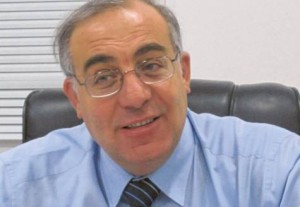By Arno Maierbrugger, Deputy Business Editor www.gulfnews.com
Dubai: NFT Cranes, the biggest supplier of tower cranes in the Middle East, with its headquarters in Abu Dhabi, is aiming to expand its international business and to climb higher in the global ranking in the tower crane and hoist industry, Gulf News has learnt.

The 500-employee company, which will take part at the Big 5 PMV exhibition in Dubai from November 22 to 25, has supplied cranes to outstanding developments and building projects such as the Burj Khalifa, DIFC, Emirates Mall and Jumeirah Beach Residences in Dubai, the Reem Island Development, Adnoc headquarters and the ADIA Tower in Abu Dhabi, among others. It has also been a part of several other top projects in the region, for example the Kingdom Tower in Riyadh.
Gulf News spoke to NFT’s managing director Nabeel Al Zahlawi about his firm’s towering success.
How large is the tower crane market in the Middle East and what are the current difficulties in the wake of the property slowdown?
The region has observed a decline in building activity due to the financial crisis, as we all know, except from Saudi Arabia and Qatar. Our company therefore has shifted its focus from the traditional building sector towards the industry, to developments in the oil and gas and the petrochemical sector as well as to the planned nuclear power plant sector.
We don’t expect that improvement in housing and office building will take place too soon. This might take a little longer.
Did NFT face problems regarding late payments or payment defaults?
We are working closely with our contractors to reschedule payments if needed, offer them instalments or long-term payment plans.
This helps them in buying equipment and to keep up the construction process. We ourselves have managed to get interim financing for projects. And no, there have been no defaults as of yet, luckily.
How many tower cranes do you currently have in operation in the region?
We have 180 cranes in use on construction [sites]. Four hundred are currently on the ground.
What have been your most prestigious projects?
We have successfully completed enormous projects on time in the GCC and Middle East, supplying some of the mightiest cranes in the world to help construct some of the tallest and most imposing buildings, including skyscrapers in Abu Dhabi, Riyadh and Dubai, projects on which operating heights can reach up to 500 metres. The most prestigious projects include the Burj Khalifa, the Kingdom Tower in Riyadh, the World Trade Center in Bahrain, the Al Fardous and Al Hamra Towers in Kuwait and many others.
Recent ongoing projects are Princess Nora Bint Abdul Rahman University in Saudi Arabia, one of the largest construction projects currently underway in the Middle East, the Adnoc headquarters, the Cleveland Clinic, the Etihad Towers project and the Bab Al Qasar Hotel.
What is the business strategy for the near future? Are there expansion plans to new countries, regions?
We have major strategic plans to expand worldwide as there is lot of potential in the market.
My goal in the long term is to seek out relationships with overseas companies to extend foreign market penetration, so as to reduce downtime and rental stock take-up.
My mind is open to the nature of collaborations in Europe, Far East — it may be in USA and Canada. We recently opened offices in Ethiopia, Libya, Singapore, Kazakhstan, Azerbaijan, and India could be the next step. China, of course, is a very promising market, but not for us at the moment.
What are your main competitors in this business?
We are facing all kinds of competitors. There are companies from Europe and China. The Chinese come with a cheap price and lower categories. So far they are not real competitors at our level. These are, mainly, Liebherr from Germany and Terex of Italy.
Some projects in the region are on hold, but still many cranes are standing at the construction sites. What is the life span of a crane?
It’s five years on and off, but if the crane is not moved and operated, its components are exposed to humidity and other climate factors.
If a crane stands unused for a longer time, this creates a lot of problems and it will eventually have to be replaced.
How high can a tower crane go?
Up to 700 metres. Our highest crane currently is 520 metres.












